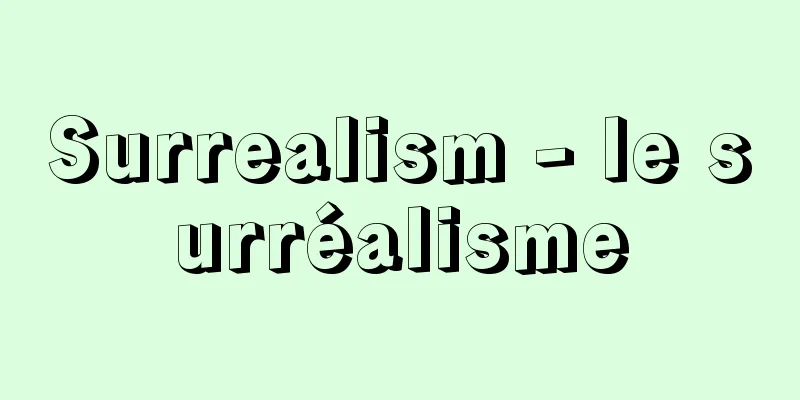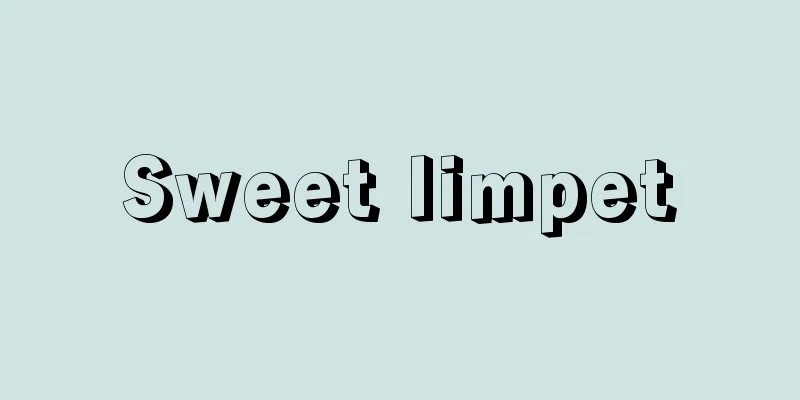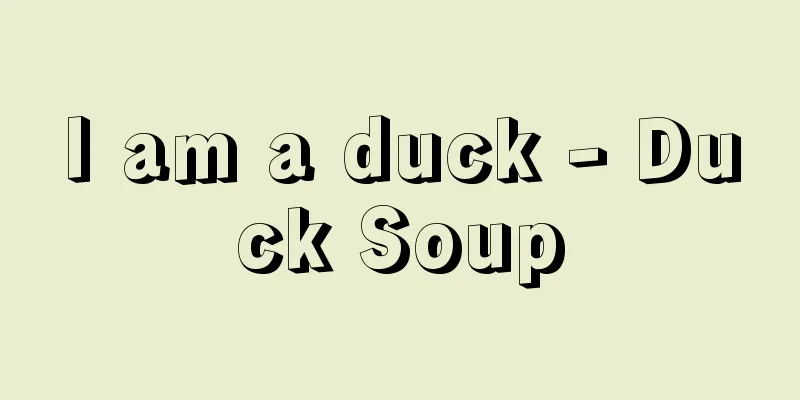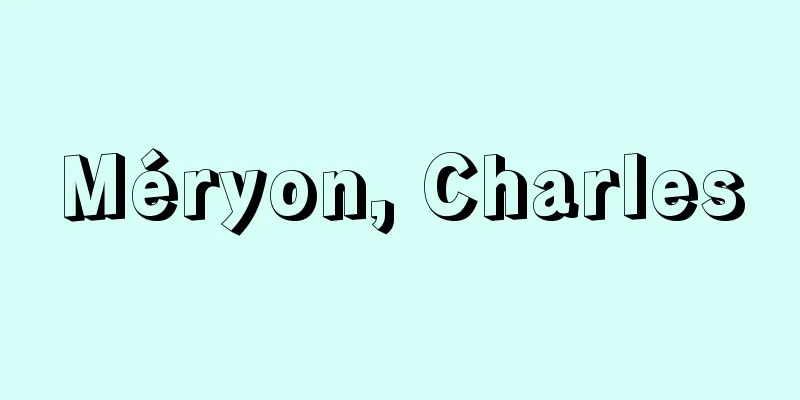Surrealism - le surréalisme

|
It is translated as surrealism. It refers to the literary and artistic movement, as well as its ideas and methods, that began with the publication of the Manifesto of Surrealism by the French poet Breton in 1924. Originally coined by Apollinaire, the meaning given by Breton is different from its predecessors, and is based on the experiment of "automatism" (l'automatisme) or "automatic writing" (l'écriture automatique) that he attempted with Soupault in 1919. The definition in the Manifesto states that it is "the writing of thoughts free from all constraints of reason, free from all aesthetic and moral preconceptions," and that it is "based on trust in the superior reality of certain associative methods that have been neglected until now, and on trust in the non-calculating activity of thought," and so on, because it respects the premise. [Kunio Iwaya] 1920sAfter 1920, Breton cooperated with the Paris Dada movement together with Aragon, Éluard, Perret, Desnos, and René Crevel (1900-1935), but soon began to study dreams and mediumship, and aimed to achieve a new view of humanity under the influence of Freud's psychoanalysis, the new poetic language of Rimbaud and Lautréamont, the methods of avant-garde art from the early 20th century, and revolutionary ideas linked to anarchism. Their so-called "surreality" (le surréel) was not something outside of reality, but rather a "higher reality" that exists within reality, and they believed that in order to rediscover it and realize a "true life," it was necessary to liberate thought, restore the power of the imagination, and reexamine dreams, madness, and paranormal phenomena. Based on this belief, they launched the journal "Surrealist Revolution" and opened the "Surrealist Research Center". Many poets, including Artaud, Limbourg, Leiris, Queneau, and Prévert, and many painters, including Ernst, Man Ray, de Chirico, Miro, Masson, and Tanguy, joined the movement, and it developed into a diverse group of activities. However, their ideology, which advocated a change in life, gradually came under scrutiny from Marxism, and their main members temporarily joined the French Communist Party, leading to internal divisions over their political choices. Breton's Second Manifesto of Surrealism (1929) expelled many members, and it was expected that the movement would weaken, but after the launch of a new journal, "Surrealism in the Service of the Revolution", Char, Sadoul, Bunuel, Dali and others joined, and the movement entered its second stage. [Kunio Iwaya] 1930s and afterBy the 1930s, its influence had already become international, with influential sympathizers appearing in Belgium (Magritte and others), England ( Sir Roland Penrose (1900-1984) and others), Denmark (Wilhelm Freddie (1909-1995) and others), Germany (Bellmer and others), Czechoslovakia (Cerminova Toyen (1902-1980) and others), Romania (Jacques Hérold (1910-1987) and others), as well as throughout the Middle East, North Africa, and the Americas, and even Japan (Shuzo Takiguchi and others). With the outbreak of World War II, the movement's main focus shifted from Europe to New York, but after Breton's return to Paris in 1946, a new generation of participants developed the movement, and its aftereffects continued until after the "May Revolution" (1968). Not only has it had a major impact on the literary world, as represented by Breton and the pictorial world, as represented by Ernst and others, but it has also had a major impact on various fields of contemporary thought as an attempt to comprehensively grasp the relationship between humanity and reality, transcending the various genres of art. [Kunio Iwaya] artSurrealism in art was only one aspect of this movement, but it produced the richest results. In Breton's Surrealist Manifesto, the reference to art was only incidental. In the early period, there were even voices denying the possibility of Surrealism in visual art. However, as early as 1922, Breton himself had found images in the collages of Ernst and others that matched the ideas of the poets. Surrealism, which originally started out with close ties to the Dada movement, emphasized its "separation from Dada," but it could be said that it had to recognize concrete ideas in some of its images. Historically, there are various precedents from Uccello to Gustave Moreau, and in the same generation, there was De Chirico's onirism (nightmares) and Ernst's frottage. In 1922, Ernst painted a group of Surrealists, including himself and De Chirico. In 1924, Miro also joined the group with his supernaturalistic style of painting. Masson, whose drawings expressed the "automatic writing" spontaneous expression that the poets considered, was also one of the most representative members of the early group. Masson eventually applied this technique to oil painting, producing what are known as "sand paintings," and Ernst invented the technique of frottage, seeking, so to speak, to awaken the dark depths of the inner self. Although it came much later, this school is characterized by a variety of unique techniques, such as the decalcomany technique (the automatic, accidental discovery of forms through a transfer method) pioneered by Oscar Dominguez (1906-1957), the fumage technique (the creation of smoke marks from a candle flame) by Wolfgang Paalen (1905-1959), the effect of the encounter of the unexpected in Magritte (a technique commonly used by poets), and Dali's "method of paranoid criticism." In other words, the Surrealists were not a school of art that shared the same new methods or aesthetics, but rather a group of people who came together to visualize dreams and inner thoughts using their own themes and methods. In 1928, Breton wrote Surrealism and Painting ( Le Surréalisme et la peinture ), in which he spoke about the mission of painters, saying, "If plastic art is to respond to the demand for a complete revision of the realistic values that everyone today affirms, it must have as its starting point a purely internal model." The year after The Surrealist Manifesto, in 1925, the first Surrealist exhibition was held at the Galerie Pierre in Paris, and the main exhibitors were de Chirico, Klee, Arp, Ernst, Miro, Picasso, and Man Ray. After that, the Surrealist Gallery was founded on the Rue Jacques Callot in Paris, which became the base of activities, and the movement expanded dramatically from the late 1920s to the 1930s. Tanguy joined the movement in 1925, and soon after, he used precise, realistic techniques to paint anonymous organic objects in what could be called an anonymous space, whether it be the bottom of the ocean or outer space, creating a unique world. Along with Tanguy, Dalí, who made his debut in Paris in 1929, represents the second generation of Surrealists. Dalí's world, which depicts paranoid hallucinations using precise, realistic techniques, can be said to be the most Surrealistic form. In the 1930s, in addition to the aforementioned Dominguez and Paalen, Bellmer and Giacometti also joined the movement. Amid the growing social and political tension and anxiety of the 1930s, Surrealism produced many outstanding works, including Picasso's "Franco's Dreams and Lies" and "Guernica," Miro's series of works that also convey the anxiety and anger of the Spanish Civil War, and Dali's "The Beans Boil," which foreshadows civil war. On the other hand, Surrealism, in terms of its subconscious development and its anti-ethical attitude, favored themes of sex and eroticism, with Picasso, Miro, Dali, Ernst, and Magritte providing various images. However, while the 1930s' approaches to political issues and the diversification of themes and methods were ideal conditions for the spread and international expansion of Surrealism, they also became the source of internal conflict and division. Surrealism was transplanted to Japan by Fukuzawa Ichiro in 1931 (Showa 6). In London, a large-scale Surrealist exhibition was held by Penrose in 1936, with participation from Paul Nash and Henry Moore. Eventually, this kind of heyday of Surrealism in the 1930s came to an end with the Second World War. When a gigantic "reality" took over, was it fair to say that any "hyperreality" was forced to fall silent? In 1941, Breton defected to the United States, where he continued his movement with Ernst, Duchamp, and others. The critical journal VVV (1942-1944) was their organ. They were influenced by Cuban painter Wilfredo Lam, who painted the strange impressions of jungles, and Chilean-born Roberto Sebastiano Matta Echaurren (1912-2002), who painted vague spaces on large canvases. They also influenced Gorky, Robert Motherwell (1915-1991), Calder, Tobey, and others who would go on to form the American postwar avant-garde. Pollock's works from the late 1940s also show the influence of Masson and Ernst's techniques, especially the dripping technique (a method of painting by dripping paint directly onto the canvas). However, all of these influences were gradually absorbed into subsequent Abstract Expressionism and Action Painting. [Kimio Nakayama] "The Collected Works of André Breton, vols. 1, 3-7, edited by Takiguchi Shuzo (1970-1974, Jinbun Shoin)" ▽ "Surrealism and Art, by Iwaya Kunio (1976, Kawade Shobo Shinsha)" ▽ "The Surrealists, by Philippe Audoin, translated by Okaya Koji and Sasamoto Takashi (1977, Hakusuisha)" ▽ "The World Masters Series, Supplementary Volume: Surrealism, with commentary by U.M. Schniede, translated by Yamawaki Kazuo (1980, Bijutsu Shuppansha)" ▽ "Dada and Surrealism: Tradition and Contemporary Change, by Tristan Tzara, translated by Hamada Akira (1985, Shichosha)" ▽ "Breton Speaks of Surrealism, by André Breton, translated by Inada Miyoshi and Sayama Hajime (1994, Shichosha)" ▽ "What is Surrealism?" by André Breton, translated by Akiyama Sumio (1994, Shichosha) " ▽ "Surrealist Paintings" by Simon Wilson, translated by Shinseki Kimiko (1997, Nishimura Shoten)" ▽ "Surrealism and Paintings" by André Breton, supervised by Takiguchi Shuzo, supervised by Iwaya Kunio, translated by Awazu Norio et al. (1997, Jinbun Shoin)" ▽ "Surrealism" by J. Chénieux-Gendron, translated by Hoshino Moriyuki and Suzuki Masao (1997, Jinbun Shoin)" ▽ "For Students of Dada and Surrealism" by Hamada Akira, Tabuchi Shinya et al. (1998, Sekaishisosha)" ▽ "Iwanami World Art" by Matthew Gale, translated by Iwaya Kunio and Tsukahara Fumi Dada and Surrealism (2000, Iwanami Shoten) ▽ Surrealism and the Sacred, by Jules Maunelot, translated by Arita Tadao (2000, Yoshinatsusha) ▽ Collection of Japanese Surrealism, Reprint 2, Surrealist Art and Criticism, edited by Wada Hirofumi and edited by Isodono Toshiharu (2001, Hontomosha) ▽ Surrealism, by P. Waldberg, translated by Iwaya Kunio (Kawade Bunko) ▽ What is Surrealism? Lectures on the Surreal, by Iwaya Kunio (Chikuma Gakugei Bunko) [References] | | | | | | | | | | | | | | |Charles| | | | | | | | | | | | | |Buñuel| | | | | | | | |Moore| | |Source: Shogakukan Encyclopedia Nipponica About Encyclopedia Nipponica Information | Legend |
|
超現実主義と訳される。1924年、フランスの詩人ブルトンの『シュルレアリスム宣言』Manifeste du surréalisme刊行によって開始された文学・芸術上の運動、およびその思想・方法等をさす。元来アポリネールの造語であったが、ブルトンの付与した意味はその前例とは異なるもので、1919年、彼がスーポーとともに試みた「オートマティスム」l'automatismeまたは「自動記述」l'écriture automatiqueの実験に基づく。『宣言』の定義に「理性によるいっさいの制約、美学上、道徳上のいっさいの先入見を離れた、思考の書き取り」、また「これまで閑却されてきたある種の連想方式の優れた現実性への信頼、および思考の非打算的活動への信頼に根拠を置く」云々(うんぬん)とあるのは、その前提を重んじるがゆえである。 [巖谷國士] 1920年代ブルトンは1920年以後、アラゴン、エリュアール、ペレ、デスノス、クルベルRené Crevel(1900―1935)らとともにパリ・ダダの運動に協力するが、やがて夢や霊媒現象の研究に着手し、フロイトの精神分析、ランボーやロートレアモン以後の新しい詩的言語、20世紀初頭からの前衛芸術の諸方法、アナキズムに連なる革命思想等々の影響下に、新しい人間観の達成を目ざす。彼らのいわゆる「超現実」le surréelは現実の外にあるものではなく、むしろ現実に内在する「より高次の現実」の謂(いい)であって、それを再発見し「真の人生」を実現するためには、思考の解放、想像力の復権、夢や狂気や超常現象の再検討が必須(ひっす)であるとされる。 その主張に基づいて機関誌『シュルレアリスム革命』を創刊、「シュルレアリスム研究センター」を開設し、アルトー、ランブール、レーリス、クノー、プレベールら多くの詩人、エルンスト、マン・レイ、デ・キリコ、ミロ、マッソン、タンギーら多くの画家が加わり、多彩な活動を繰り広げる。だが人生の変革を標榜(ひょうぼう)するその思想はしだいにマルクス主義との対決を迫られ、主力メンバーが一時フランス共産党に入党、その政治的選択をめぐって内部分裂が始まる。ブルトンの『シュルレアリスム第二宣言』Second Manifeste du Surréalism(1929)は多くの成員を除名し、弱体化が予想されたが、新機関誌『革命に奉仕するシュルレアリスム』の創刊後、シャール、サドゥール、ブニュエル、ダリらが加わり、運動の第二段階に入る。 [巖谷國士] 1930年代以降1930年代にはその影響はすでに国際化しており、ベルギー(マグリットら)、イギリス(ペンローズSir Roland Penrose(1900―1984)ら)、デンマーク(フレディWilhelm Freddie(1909―1995)ら)、ドイツ(ベルメールら)、チェコスロバキア(トワイヤンCerminova Toyen(1902―1980)ら)、ルーマニア(エロルドJacques Hérold(1910―1987)ら)、また中近東から北アフリカ、南北アメリカ大陸にかけて、さらに日本(滝口修造ら)にも、有力な同調者が現れる。第二次世界大戦勃発(ぼっぱつ)とともに主力はヨーロッパからニューヨークに移るが、1946年にブルトンがパリに戻って以来、新世代の参加者による運動が展開され、「五月革命」(1968)後までその余波が残る。ブルトンらに代表される文学上の成果、そしてエルンストらに代表される絵画上の成果にとどまらず、すでに芸術の諸ジャンルを超えた人間と現実との関係の総合的な把握の試みとして、現代思想の各分野に大きな影響を及ぼしている。 [巖谷國士] 美術美術上のシュルレアリスムはこの運動の一局面ではあるが、しかしもっとも豊かな成果を生んだ。ブルトンの『シュルレアリスム宣言』では、美術について触れる部分は付随的でしかなかった。また初期には、造形美術におけるシュルレアリスムの可能性を否定する声さえあった。しかし、1922年すでにブルトン自身、エルンストらのコラージュ作品に、詩人たちの理念に合致するイメージの存在をみいだしていた。もともとダダの運動との密接なかかわり合いから出発したシュルレアリスムは、「ダダからの分離」を強調する一方で、そのイメージのある部分に、具体化された理念を認めざるをえなかったといえよう。歴史的にはウッチェロからギュスターブ・モローまでのさまざまな先例がそうであり、同世代には、デ・キリコのオニリスム(夢魔)、エルンストのフロッタージュがあった。1922年エルンストは、シュルレアリストたちの群像を描き、そのなかにエルンスト自身やデ・キリコを描き込んでいる。1924年には、ミロもその超自然主義的な画風でグループに加わる。また詩人たちの考える「自動記述的」内発的な表現を、素描で示したマッソンも、初期のもっとも代表的なメンバーである。 マッソンはやがてこの手法を油彩に適用して、いわゆる「砂の絵」を生み出したし、エルンストもフロッタージュの手法を創案して、内面の暗黒部にあるものをいわば喚(よ)び起こすことを求めた。年代的にはかなりあとになるが、オスカル・ドミンゲスOscar Dominguez(1906―1957)によって創始されたデカルコマニー(転写法による自動的、偶然的な形態の発見)の手法、あるいはウォルフガング・パーレンWolfgang Paalen(1905―1959)によるフュマージュ(ろうそくの炎で煙の燻(いぶ)し跡をつける)の手法、あるいはマグリットにおける意外なものの出会いの効果(これは詩人たちによる常用の手段であった)、ダリの「偏執狂的批判の方法」など、さまざまな特異な手法がこの派を特徴づけている。いいかえれば、同一の新しい方法や美学で一致する流派ではなく、それぞれのテーマと方法によって、夢や内面をイメージ化するべく集合したのがシュルレアリストたちであった。 ブルトンは1928年『シュルレアリスムと絵画』Le Surréalisme et la peintureを著したが、そのなかで画家の使命について「造形美術とは、もしそれが、今日だれもが肯定しているような現実的な価値を完全に改訂しようという要求にこたえるものだとすれば、その出発点として純粋に内なるモデルをもたなければならない」と語っている。『シュルレアリスム宣言』の翌年、1925年パリのピエール画廊で、最初のシュルレアリスム展が開催されたが、おもな出品者は、デ・キリコ、クレー、アルプ、エルンスト、ミロ、ピカソ、マン・レイたちであった。その後、パリのジャック・カロ街にシュルレアリスム画廊が創設されて活動の拠点となり、運動は1920年代末から1930年代にかけて飛躍的に拡大している。 タンギーは1925年に運動に参加しているが、やがて彼は、精緻(せいち)な、写実的描写法を用いて、海底とも宇宙空間ともわからない、いわば無名の空間に、やはり無名の有機的物体を描いて特異な世界を形成した。タンギーとともにシュルレアリスムの第二世代を代表するのが、1929年にパリでデビューしたダリである。偏執的な幻覚をやはり緻密な写実的描法で描くダリの世界は、もっともシュルレアリスティックな造形であるといえよう。1930年代には、前述のドミンゲス、パーレンのほか、ベルメール、ジャコメッティらが運動に加わっている。 1930年代の社会的・政治的な緊張と不安の高まりのなかで、シュルレアリスムは数多くの優れた作品を生んだ。ピカソの『フランコの夢と嘘(うそ)』『ゲルニカ』、ミロの一連のやはりスペイン市民戦争の不安や怒りを伝える作品、あるいは内乱の予感を示すダリの『豆の煮えるまで』などが代表的作品としてあげられる。 一方、シュルレアリスムは、意識下の開発といった点で、また反倫理的な姿勢として、好んで性、エロティシズムをテーマとしている。この場合もピカソ、ミロ、ダリ、エルンスト、マグリットたちによるさまざまなイメージの提出がなされた。 しかし、1930年代における政治的な問題へのアプローチと、テーマや方法の多様化は、シュルレアリスムの伝播(でんぱ)、国際的な拡大にとって絶好の土壌であったと同時に、内部的な対立や分裂の原因ともなった。 日本へのシュルレアリスムの移植は、1931年(昭和6)福沢一郎によってなされている。ロンドンでは、1936年ペンローズによって大規模なシュルレアリスム展が開催され、ポール・ナッシュ、ヘンリー・ムーアたちが参加している。やがて、1930年代のこのようなシュルレアリスムのある種の絶頂期は、第二次世界大戦によって解体し、終幕する。巨大な「現実」の支配するとき、どのような「超現実」も沈黙せざるをえなかったというべきだろうか。 1941年ブルトンはアメリカに亡命し、エルンスト、デュシャンたちとともに運動を継続している。評論誌『VVV』(1942~1944)が彼らの機関誌であった。密林の奇怪な印象を描くキューバの画家ウィルフレード・ラム、漠とした空間を大カンバスに描くチリ生まれのロベルト・マッタRoberto Sebastiano Matta Echaurren(1912―2002)たちがその影響を受ける。やがてアメリカの戦後の前衛を形成するゴーキー、マザーウェルRobert Motherwell(1915―1991)、コルダー、トビーたちもその影響を受けた。ポロックの1940年代後半の作品群にもマッソンやエルンストの手法、とくにドリッピング(カンバスの上に直接絵の具を垂らして描く方法)の手法の影響がみられる。しかし、こうした影響はいずれも、その後の抽象表現主義なりアクション・ペインティングなりにしだいに吸収されていった。 [中山公男] 『滝口修造編『アンドレ・ブルトン集成』1、3~7巻(1970~1974・人文書院)』▽『巖谷國士著『シュルレアリスムと芸術』(1976・河出書房新社)』▽『フィリップ・オードワン著、岡谷公二・笹本孝訳『シュルレアリストたち』(1977・白水社)』▽『U・M・シュニーデ解説、山脇一夫訳『世界の巨匠シリーズ 別巻 シュールレアリズム』(1980・美術出版社)』▽『トリスタン・ツァラ著、浜田明訳『ダダ・シュルレアリスム 変革の伝統と現代』(1985・思潮社)』▽『アンドレ・ブルトン著、稲田三吉・佐山一訳『ブルトン、シュルレアリスムを語る』(1994・思潮社)』▽『アンドレ・ブルトン著、秋山澄夫訳『シュルレアリスムとは何か』(1994・思潮社)』▽『サイモン・ウィルソン著、新関公子訳『シュルレアリスムの絵画』(1997・西村書店)』▽『アンドレ・ブルトン著、滝口修造監修、巖谷國士監訳、粟津則雄他訳『シュルレアリスムと絵画』(1997・人文書院)』▽『J・シェニウー・ジャンドロン著、星埜守之・鈴木雅雄訳『シュルレアリスム』(1997・人文書院)』▽『浜田明・田淵晋也他著『ダダ・シュルレアリスムを学ぶ人のために』(1998・世界思想社)』▽『マシュー・ゲール著、巖谷國士・塚原史訳『岩波世界の美術 ダダとシュルレアリスム』(2000・岩波書店)』▽『ジュール・モヌロ著、有田忠郎訳『シュルレアリスムと聖なるもの』(2000・吉夏社)』▽『和田博文監修、五十殿利治編『コレクション・日本シュールレアリスム 復刻2 シュルレアリスムの美術と批評』(2001・本の友社)』▽『P・ワルドベルグ著、巖谷國士訳『シュルレアリスム』(河出文庫)』▽『巖谷國士著『シュルレアリスムとは何か――超現実的講義』(ちくま学芸文庫)』 [参照項目] | | | | | | | | | | | | | | | | | | | | | | | | | | | | | | | | | | | | | | | | | | |出典 小学館 日本大百科全書(ニッポニカ)日本大百科全書(ニッポニカ)について 情報 | 凡例 |
Recommend
Lopez de Mendoza, I.
...Don Juan Manuel, the nephew of the wise king, ...
Sydney Basin
This is the most important coalfield near the port...
Weather proverbs - Tenkirigen
[Things related to the weather and agriculture] R...
Chronicles of Puppetry - Now and Then
A history of Joruri written in the Ukiyo-zoshi sty...
Cuban Revolutionary Party
… [From independence to revolution] The Cubans th...
Niccolò Paganini
Italian violinist and composer. He studied violin...
Clubiona
…A general term for spiders belonging to the genu...
Grünewald - Grunewald (English spelling)
German painter. There are many unknowns about his...
Imamiya Shrine (Tochigi) - Imamiya Shrine
…In 1635 (Kan'ei 12), Abe Shigetsugu establis...
Zinn, WH (English spelling) ZinnWH
...A nuclear reactor in which the chain reaction ...
Turnaround line - Return line
…There are two main uses. One is used in general ...
John Dory (Zeus japonicus)
A marine fish of the John Dory order and John Dory...
Salamandra
... Among newts, the genus Tylototriton , found i...
Bṛhaj‐jātaka
This is an Indian astrological book written by Var...
Obi-Ugric - Obi-Ugric
...70% of them speak Khanty as their mother tongu...









